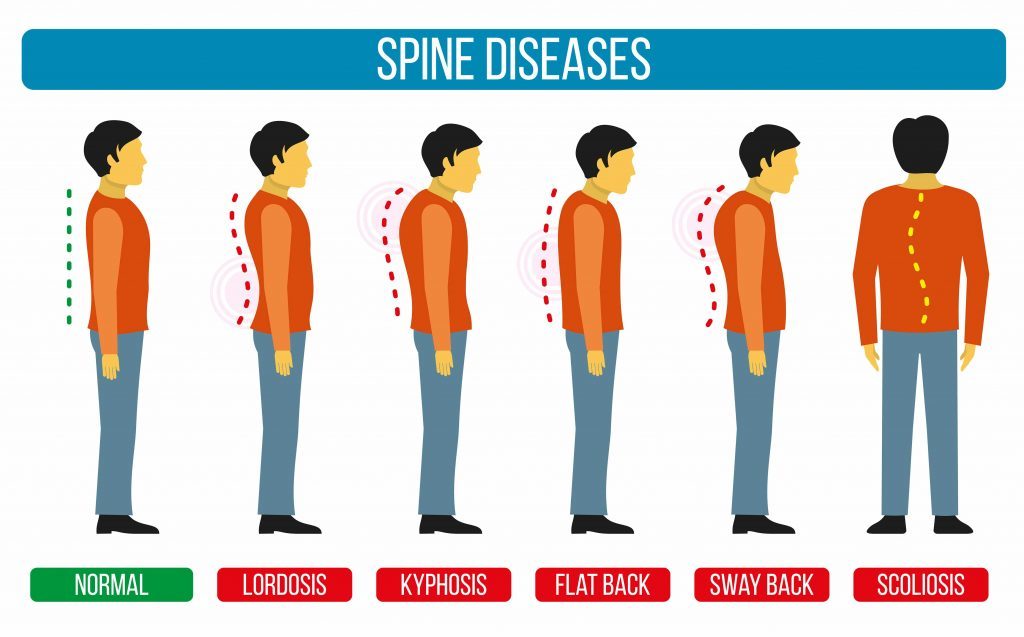
Jimmy Tang advises on how to prevent the possibility of long-term injuries from bad posture.
We live in an age of inactivity and repetitive motions. This is particularly true for dental professionals. Dentists commonly experience musculoskeletal pain during the course of their career. Pain occurs not only in their lower back, but also their neck and shoulders. Such symptoms do not occur overnight; they initially develop almost imperceptibly. Subsequently, they become increasingly obvious. You may not be currently suffering from these symptoms, but prevention is always better than cure and the earlier you recognise the causative factors, the sooner you can begin to follow a prevention regime thus avoiding the possibility of long-term injuries.
What is posture?
Typically, the term posture refers to how the body positions itself as a whole. Good posture indicates a certain positioning in which our spinal curves remain neutral, not bent forward, backward or sideways. If one of your postures puts your spine out of its natural alignment, your muscles will adapt and become unbalanced. This is called postural dysfunction.
The spine has four natural curves when viewed from the side – cervical lordosis, thoracic kyphosis, lumbar lordosis and sacral kyphosis – and they are essential for shock absorption. These curves are interdependent; a change in one curve will result in a change in the curve above or below it. In a neutral position, the spine is mainly supported by the bony structures of the vertebrae resting on top of one another. When these curves become either exaggerated or flattened, the spine increasingly depends on muscles, ligaments and soft tissues to maintain its erect position – causing tension in these structures – leading to lower back strain and the formation of trigger points. Over time, this will lead to spinal disc injury.
Hyperkyphosis
Excessive thoracic spinal flexion, typically associated with protracted shoulders and a forward head posture, as well as posterior pelvic tilt. This type of postural dysfunction is commonly observed in dentists as we spend an excessive amount of time bending forward and protracting our shoulders when we treat our patients. The effects of kyphosis on the back muscles are:
- Lengthened middle trapezius and rhomboids
- Protracted shoulders and shortened pectorals
- Extended cervical spine and shortened upper trapezius – usually with a forward head posture
- Posteriorly tilted pelvis and lumbar flexion.
Hyperlordosis
There is a natural lordotic curve and if this is excessive – hyperextension of the spine – it can lead to an anterior pelvic tilt.
These pelvic imbalances can affect the length-tension relationship of the muscles that are attached to the pelvis, leading to muscle dysfunction and lower back pain.
How can we overcome postural dysfunction?
Firstly, it is important to get to know your habitual work posture. You can correct this consciously in your everyday routine until the proper posture feels ‘normal’. This can be achieved by learning how to transform your harmful habitual postural patterns into healthy ones.
It is important to improve your work ergonomics by selecting a good operator’s chair as this will help you to maintain a neutral spine whilst you sit. It is, however, still advisable to avoid prolonged sitting as this can lead to tightening of your hip flexor group of muscles and weakening of your glutes due to reciprocal inhibition. The gluteal muscles are important for pelvic stabilisation and their weakness can lead to synergetic dominance of the ‘helper’ muscles of the back, predisposing to lower back pain.
It is also advisable to adjust the operative position to a comfortable level because if your chair is too low and the patient’s chair too high, this causes you to elevate your shoulders. Alternately, if your chair is too high and the patient’s chair too low, you will have to flex your neck excessively. Both scenarios could lead to neck pain.
Always try to adopt an upright posture, maintaining the natural thoracic kyphotic and lumbar lordodic curves. For instance, by positioning your chair closer to the patient, you can minimise forward bending over the patient’s head. Your head can be as heavy as a bowling ball, and when you lean and flex your head forward, you force your neck extensor muscles to work excessively to hold up its weight.
Alternate work positions between sitting, standing and being at the side of the patient. Switching positions allows certain muscles to relax while shifting the stress onto other muscles.
Furthermore, it is advisable to take frequent breaks, especially if you have to sit for a prolonged period of time. Even if it is only for a short period of time while you wait for anaesthesia or the setting of materials etc, get up and move around or even do simple exercises such as retracting your scapulae.
In addition, there are numerous corrective exercises that you can do to improve your postural dysfunction, but it is beyond the scope of this article to examine these in detail.
Please consult your exercise professional who will be able to help you address your muscle imbalance issues. Alternatively, please get in touch by email: [email protected].


